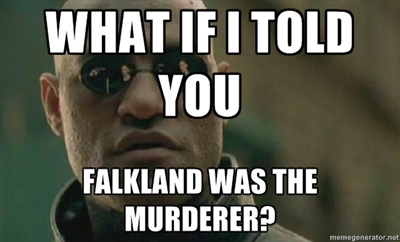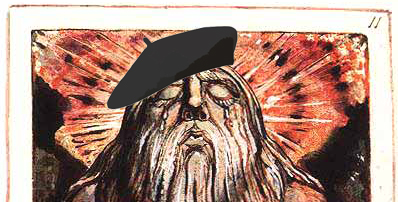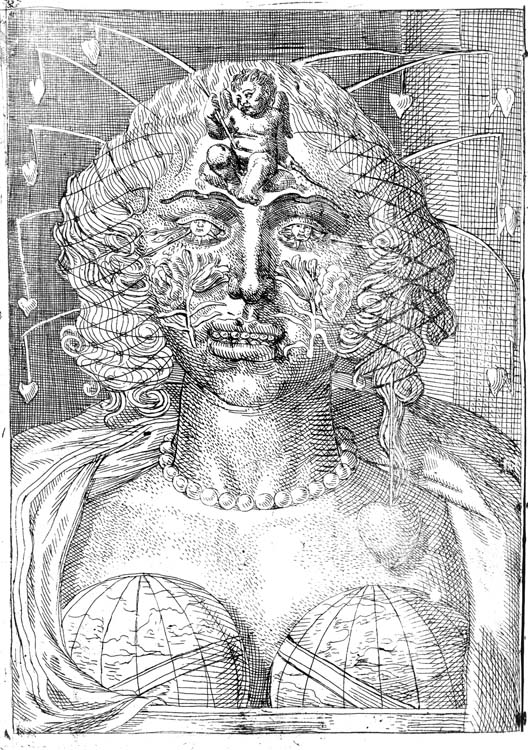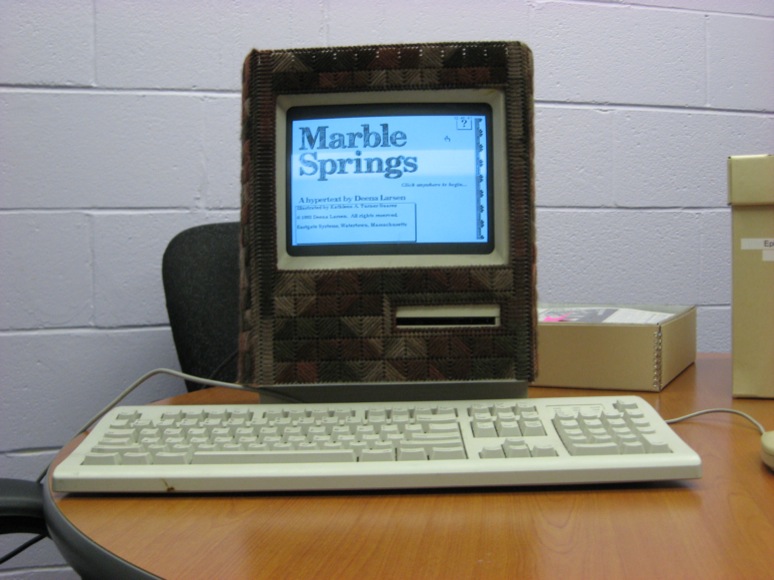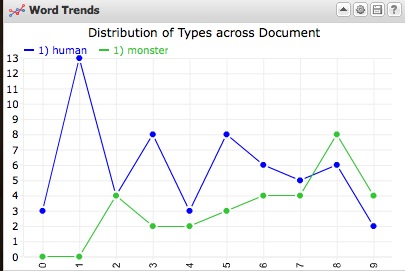As part of my final project: a website unbibliography, http://digitalliterature.net/bookhacking, providing a survey of readings on the idea of hacking the book: rewiring, reconsidering, and rebelling against the conventions of the traditional print codex, beginning with William Blake’s masterful Romantic productions. The readings cover the ways in which Blake hacked the book, how formats such as the Total Work of Art and artists’ books have further deformed the standard print tome, and how digital editions—particularly those electronically remediating Blake’s hacked books—themselves function as explosions of the conventions of the book. The readings pay particular attention to the visual design of books and online editions, treating graphical decisions as critical features of these texts and creating a catalog of opportunities and techniques for hacking the book.
Author Archives: Amanda Visconti
Supplemental readings on Agrippa and Digital Forensics
Posted by in Spring 2012 | Uncategorized - (0 Comments)More resources on Agrippa:
- Kirschenbaum, Matthew G., with Doug Reside and Alan Liu. “No Round Trip: Two New Primary Sources for Agrippa.” (From the Agrippa Files site on the syllabus, but added subsequent to the other research work on the site)
- Traub, Courtney. “An Interview with Kevin Begos, Jr“. The Oxonian Review 19.1 (23 April, 2012).
- Jones, Steven E. “Agrippa, the Eversion of Cyberspace, and Games“. Blog post response to the Traub-Begos interview that suggests thinking ahout Agrippa against ARGs and other transmedia work.
Digital Forensics and Literary Study
Matt Kirschenbaum’s recent Chronicle article on the importance of digital forensics to literary study (which looks like it’s now behind a paywall, but MITH might have a paper copy in the couch area)
Matt’s Mechanisms: New Media and the Forensic Imagination: Chapter 5 in particular focuses on Agrippa, but the whole book is a great read if you’re interested in new media. Outlining two paths for thinking about new media objects–forensic materiality and formal materiality–the book suggests “forensic imagination” as a path to thinking critically about new media (e.g. considering wear, trauma, time) as textual objects with particular histories and physicalities.
Forensic materiality examines each constituent part of a new media object as ultimately unique (e.g. because of varied manufacturing and care conditions, my Tetris NES cartridge is on some level not a perfect double of yours–just as with early printed editions, multiple “copies” are really each objects worthy of separate study because of their inconsistencies)
Formal materiality concerns itself with symbols and symbol manipulation rather than matter, bits (without material dimensions, just on/off switches) rather than than atoms (with their microscopic but real material dimensions). Kirschenbaum gives the example of shifting ways of interfacing with a digital object–with an image file, for instance, we often end up privileging the “view image” function over other functions that can also be studied, such as those that look at the image file’s metadata or header file.
Cultural Memory
A fantastic article on how we manufacture memory as a culture–looks at both how we mark things we want to remember in ways we assume the future will still understand (e.g. monuments for fallen soldiers, victims) and how we might warn away future generations from danger (e.g. how to mark a nuclear waste site to protect those who can no longer read our current written language). Some food for thought on how we imagine permanence and importance with respect to the materials and ways of inscribing we use:
Kenneth E. Foote (1990). “To remember and forget: archives, memory, and culture.” American Archivist 53/3 (Summer): pp. 378-392.
I created some webpages with the documentation used by Team MARKUP: http://amandavisconti.github.com/markup-pedagogy/. The content represents almost everything we worked from during the encoding phase of our project, except some administrivia and links/images representing copyrighted content (sorry, no manuscript screenshots!).
“How Can You Love a Work If You Don’t Know It?”: Six Lessons from Team MARKUP
Posted by in Spring 2012 | Uncategorized - (9 Comments)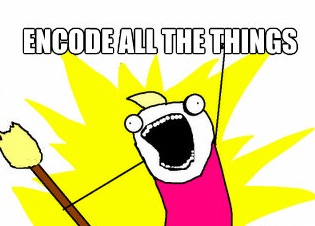
Encode all the things... or not. Remixed from image by Allie Brosh of Hyperbole (hyperboleandahalf.blogspot.com).
Update 4/24/2012: Oh, neat!: this post got the DH Now Editor’s Choice on Tuesday, April 24th, 2012.
Team MARKUP evolved as a group project in Neil Fraistat’s Technoromanticism graduate seminar (English 738T) during the Spring 2012 term at the University of Maryland; our team was augmented by several students in the sister course taught by Andrew Stauffer at the University of Virginia. The project involved using git and GitHub to manage a collaborative encoding project, practicing TEI and the use of the Oxygen XML editor for markup and validation, and encoding and quality-control checking nearly 100 pages of Mary Shelley’s Frankenstein manuscript for the Shelley-Godwin Archive (each UMD student encoded ten pages, while the UVa students divided a ten-page chunk among themselves).
Team MARKUP is currently writing a group blog post on the process, so I’ll use this post to concentrate on some specifics of the experience and link to the group post when it’s published.
Six takeaways from the Team MARKUP project:
- Affective editing is effective editing? One of my favorite quotations–so beloved that it shapes my professional work and has been reused shamelessly on my Ph.D. exams list, a Society for Textual Scholarship panel abstract, and at least one paper–is Gary Taylor’s reasoning on the meaningfulness of editing:
“How can you love a work, if you don’t know it? How can you know it, if you can’t get near it? How can you get near it, without editors?”*.
Encoding my editorial decisions with TEI pushed me a step closer to the text than my previous non-encoded editorial experience, something I didn’t know was possible. My ten pages happened to be the first pages of the Creature’s monologue; hearing the voice of the Creature by seeing its true creator’s (Mary Shelley’s) handwriting gave me shivers–meaningful shivers accompanied by a greater understanding of important aspects of Shelley’s writing, such as the large editorial impact made by her husband Percy and the differing ways she crossed out or emphasized changes to her draft. Moving between the manuscripts images and the TEI encoding–so similar to my other work as a web designer and developer–also emphasized the differences in the writing process of my generation and the work that went into inscribing, organizing, and editing a book without the aid of a mechanical or digital device. (more…)
Seven thematic connections between Caleb Williams and The Matrix identified by me, Allison Wyss, and Phil Stewart:
1. It takes some uncanniness around a cultural ideal for the interpellated to finally recognize their interpellation. The Matrix: Neo has a strong lesson in the shallowness of visual facades when the perfect “Lady in Red” turns into an Agent; Caleb Williams: Falkland, a chivalric, moral, and intellectual exemplar to Laura, Collins, and almost everyone else in the book must be revealed as a murderer for Caleb to begin to recognize “things as they are”. That’s right: Falkland is the Lady in Red.
2. As with Burke, it’s possible to recognize the illusions around us yet continue to embrace them. The Matrix: Cypher is part of the rebellion, yet willingly returns to the ignorance of enjoying a good steak; Caleb Williams: Gines experiences the democracy of the robber band, yet is content to return to the flip-side world of social inequality through the robber-snatching trade in order to survive comfortably and with emotional satisfaction.
3. You can be given the necessary knowledge to break free (or at least recognize) the ideological system surrounding you, but that doesn’t mean you’ll be ready or able to use that information. The Matrix: Neo interprets the Oracle’s words to mean he is not the One and that there thus may be no hope of breaking the A.I.’s dominance; Caleb Williams: after telling Mr. Falkland’s narrative at the beginning of the novel, Collins and Caleb are at the same level of information concerning Falkland (e.g. both able to observe him when he judges the trial that upsets him so), yet only Caleb puts recent and past events together to realize Falkland’s guilt.
4. Sometimes, a certain innocence within the system that ensnares you allows you to temporarily triumph over it. The Matrix: the young child who is able to free his mind can bend spoons (yet ultimately–at least in the first movie–he is a failed Potential, not the One who can entirely break free of the Matrix); Caleb Williams: Emily’s good nature allows her to positively interpret Tyrell’s tyrannies for some time, rendering her experience of the world temporarily more rosy.
5. Ideologies function by oppressing and keeping ignorant a large under-class for the benefit of their masters. The Matrix‘s fields of plugged-in battery-people and the nine-million-odd poorer classes of Caleb Williams‘ time are in the same subjected position, with masters who fear their revolt and require their submission to keep things running well for the privileged group.
6. Consumable media objects (in each time period, objects that would fall into the “new media” category of literature) have a power far beyond their size to unfold new virtual worlds. Matrix: the computer disks that run the non-Matrix training programs; Caleb Williams: Gines’ ballad pamphlet, the hypothetical excuse in Falkland’s trunk)
7. Ideologies place undue stress on small wrongs in order to distract their subjects from the big con of their illusions. The Matrix: The A.I. finds that humans experience a simulation that contains wrongs and sorrows as more “real” (and thus distracting from the Matrix’s unreality) than a Paradise; Caleb Williams: the government focuses on incarcerating those marked by reputation as criminals, and thus the populace is hungry for stories like that of Kit Williams but ignores the larger social evils around them.
The Allen Ginsberg Project blog has started posting transcripts of the beat poet’s lectures on Blake’s Book of Urizen from a 1978 seminar on Blake. I’ve found the second and third lectures to be the most worth reading:
- Lecture 1 (mostly administrative discussion)
- Lecture 2 (the lecture starts–includes discussion of William Godwin and gnosticism)
- Lecture 3 (Urizen and Milton)
- Lecture 4
(found via “The Cynic Sang” Blake Archive blog, which has posts on both Blake and the technical work of the Archive.)
Useful prosthetics, pretty metaphors? (and more on DH tools)
Posted by in Spring 2012 | Uncategorized - (9 Comments)“Metaphors will be called home for good. There will be no more likeness, only identity.”
Shelley Jackson, Patchwork Girl
Some interrelated thoughts on cyborgs/metaphors/prosthetics. Shelley Jackson’s Patchwork Girl quotes Shakespeare’s Sonnet 130 (“my mistress’ eyes are nothing like the sun”), bringing into a work already quite aware of the mimicries between body and text the idea of blason, the style of poetry that praises but pieces individual pieces of the loved one’s anatomy through metaphor (“she goes on”). Ever since I encountered the etching above, with its parodic response to such blason conceits as eyes like suns darting rays, cheeks like roses, and teeth like pearls, I’ve been unable to read that form of poetry as intended (i.e. describing a harmonious whole); the etching questions whether we can fashion the ideal from constituent ideals. Victor Frankenstein describes his Creature as an almost-functional blason figure (“I had selected his features as beautiful”), but precedes this claim by admitting another qualifier on his choices for materials: “His limbs were in proportion”. As with the etching, the Creature’s monstrosity comes partly from the failure of these parts, beautiful and proportionate as they may be, to coexist.
I’ve been thinking about extending these questions of the harmony and juxtaposition of parts of a whole (text/body) to prosthetics, whether these prosthetics are more metaphorical (e.g. prosthetics of memory) or physical additions like our cyborg mobile devices. When my group was developing a Cyborg’s Definition of “Women”, we identified “that species” as a group that faced extinction after failing to make use of certain prosthetics/tools; for Wollestonecraft, the tool in question was education. Success through the use of prosthetics was a mark of cyborghood.
With the addition of prosthetics, we’re facing (as with blason) the juxtaposition of disparate parts–except in this case, the metaphors by which we’re extending our bodies aren’t pulling us apart into unbalanced monsters. Certainly they can go either way, but I’m seeing a pattern where metaphors applied onto figures can create monsters like the one in the etching, and metaphors growing out of or chosen by a figure have greater harmony and utility. Perhaps prosthetics are a way of marking these piece-making bodily metaphors not as even more-idealized (and thus less utilizable?) objects, but as tools defined by their individual uses and qualities? I’d be interested in listing and comparing the Creature’s bodily parts with the Patchwork Girl’s; given their gender difference, it’s interesting to see the Creature’s parts as typical of blason inutility (lustrous black hair!) while the Patchwork Girl’s parts are defined (sometimes indirectly via anecdote) by their abilities to dance, dissemble, act.
Read on for more on distant reading…
Dissect and Rebuild: Reimagining Frankenstein as E-Lit
Posted by in Spring 2012 | Uncategorized - (4 Comments)For our group teaching tomorrow, Kristin Gray, Kathryn Skutlin, and I will begin class by demoing various forms of e-lit, followed by an e-lit exercise where you’ll re-imagine a pivotal scene of Frankenstein through the possibilities of e-lit (we’ll pass out handouts in class, but if you want a digital copy you can download this or see the assignment on my personal blog).
E-lit mentioned in class:
- Both Michael Joyce’s afternoon and Deena Larsen’s Marble Springs can be purchased from Eastgate Publishing. Or… make an appointment with MITH to read these and more e-lit on the original hardware, or visit the Deena Larsen Collection site to read more about Larsen’s work or watch a short video demo of Marble Springs.
- Larsen’s “Fun da mentals: Rhetorical Devices for Electronic Literature” is a fantastic site teaching basic approaches to writing e-lit.
- Caitlin Fisher’s These Waves of Girls is a 2001 Flash-based work.
- The Urban 30 is an example of a “fictional blog” based on WordPress (just like this site–well, the WordPress part!); in this case, multiple writers uses the blog community to write in as fictional characters. Urban 30 is particularly interesting because it tells a superhero story, a genre that was born and lived for a long time solely in comic books.
- The 21 Steps is a story told through Google Maps. Notice how this platform complements how important location is to the story.
- “Haircut” uses YouTube to create a choose-your-own-adventure video. If you’re curious how to do this, check out this tutorial on creating annotated YouTube videos.
- Stories created using texts and Twitter have taken off; “mobile phone novels” are especially popular in Japan, where this article claims they’ve “become so successful that they accounted for half of the ten best-selling novels in 2007.” This short article gives a sense of the kinds of stories people write via Twitter.
- In addition to individual-authored Twitter stories, large groups of strangers have used this platform for communal writing. The LA Flood Project was an event that encouraged Twitter users to tweet (with an #laflood hashtag) as if they were experiencing an apocalyptic flood in L.A. This page gives the brief timeline participants were supposed to follow; you can search Twitter for #laflood to see the story unfold, though it was most exciting in real-time (the latest tweets are just people rehashing the week-long event).
- And finally, the Electronic Literature Organization (ELO) hosts the Electronic Literature Collection 1 and Collection 2, which display a wide variety of approaches to electronic writing.
Digitally Dissecting the Anatomy of “Frankenstein”: Part One
Posted by in Spring 2012 | Uncategorized - (4 Comments)A two-part blog post: the first post will cover grabbing and analyzing Twitter and other textual data and working with them in Wordle and TextVoyeur, and the second will use these tools to consider the function of body parts in Mary Shelley’s Frankenstein.



